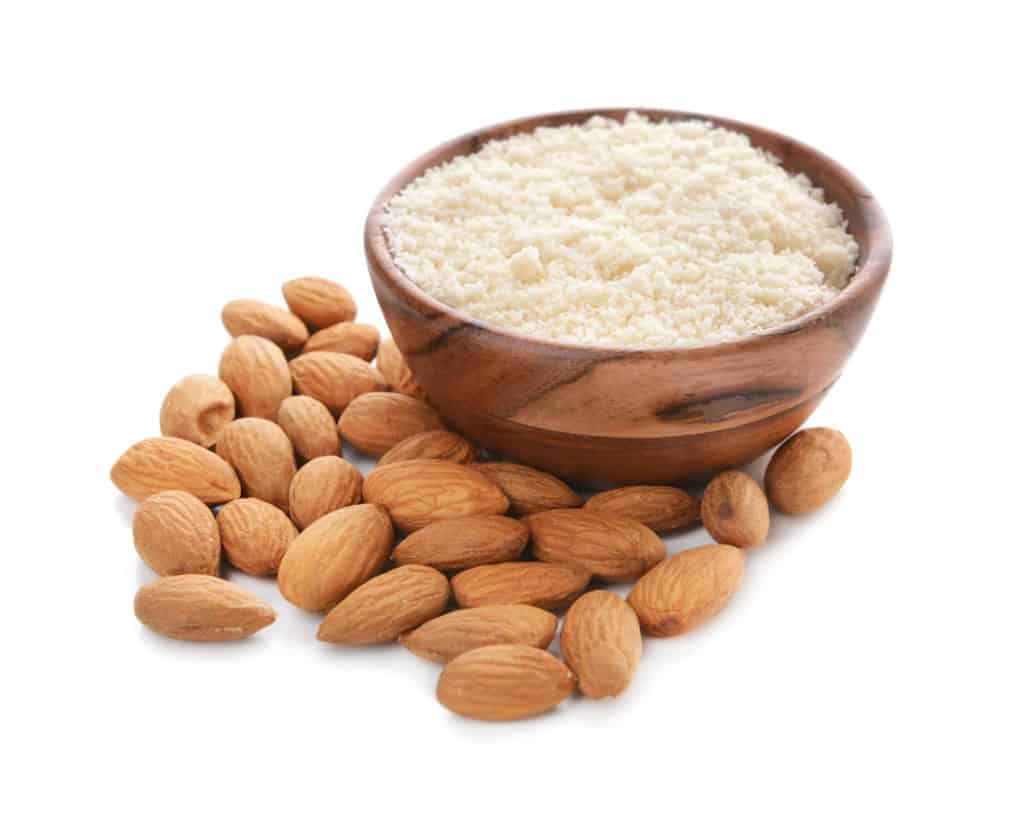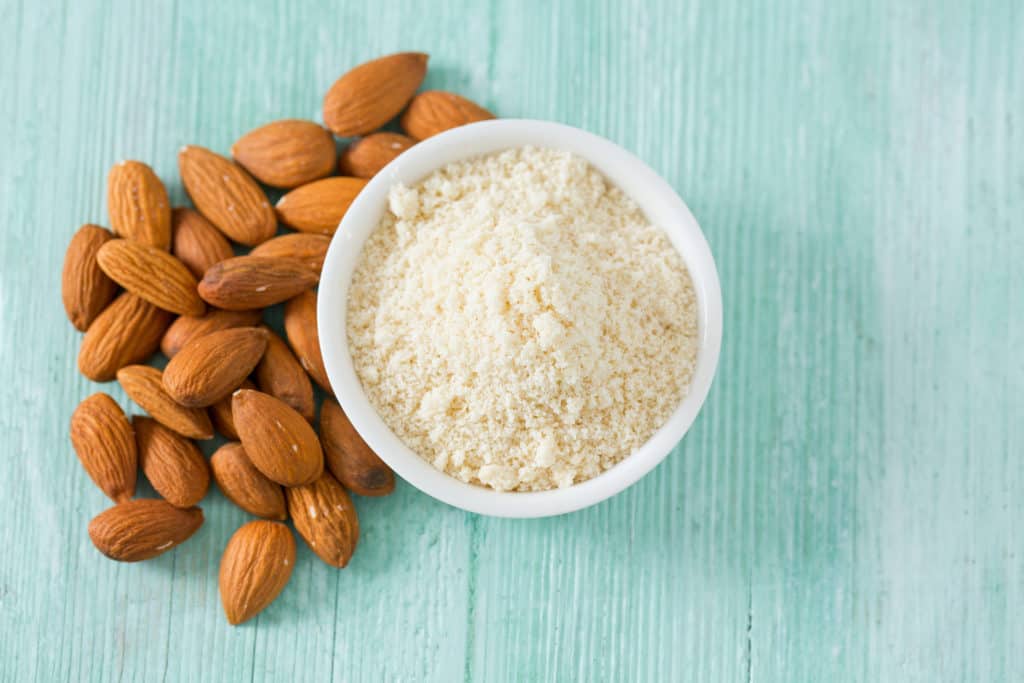From bread and pasta to cookies and snacks, flour is used in almost any food we eat today. Although flour made from wheat is the most popular type, some people can’t eat wheat because of allergies and dietary preferences. That said, almond flour is a healthy and worthy alternative, and because almond flour is gluten-free, it is also beneficial for people with celiac disease. Almond flour can substitute wheat flour in just about any recipe. It’s easy to work with, and you can buy it just about anywhere.
What Is Almond Flour?

Almond flour is obtained from ground almonds. The process includes deep-washing almonds in boiling water to extract the skins, then crushing and sifting them into powdery flour.
If you’re familiar with almond meals, you should know that almond flour is not the same; however, they are sometimes used interchangeably. Almond meal is produced by grinding almonds with their skins on, making a rougher flour. Knowing this difference is essential when trying out recipes where texture is critical.
Almond Meal vs. Almond Flour
The main distinction between almond meal and almond flour is how fine the end product is. Almond flour is more refined, and almond meal is slightly grainier. In most cases, almond meal is made out of whole raw, skinned almonds, while almond flour is obtained from peeled almonds. To put it simply, yes, it’s OK to use almond meal and almond flour interchangeably because there’s not a world of differences.
Almond Flour Nutrition
Almond flour is rich in vitamins, minerals, and antioxidants, helping reduce the risk of severe health conditions, such as diabetes, stroke, heart disease, and even cancer.
Nutrients per serving
One ounce (28 grams) contains:
- Calories: 163
- Fat: 14.2 grams (9 of which are monounsaturated)
- Protein: 6.1 grams
- Carbs: 5.6 grams
- Dietary fiber: 3 grams
- Vitamin E: 35% of the RDI
- Manganese: 31% of the RDI
- Magnesium: 19% of the RDI
- Copper 16% of the RDI
- Phosphorus 13% of the RDI
Benefits of Almond Flour

The essential nutrients, vitamins, and antioxidants in almond flour can provide numerous health benefits. For example, manganese helps the body coagulate blood properly, allowing you to heal after minor or significant injuries. Manganese also helps the body break down sugars as well as cholesterol. Moreover, the magnesium in almond flour can help you better control your blood sugar levels. Besides those, almond flour can provide other health benefits such as:
Heart Health
Almond flour is abundant in monounsaturated fat, which can help manage cholesterol levels. Lowering cholesterol levels significantly reduces the risk of contracting heart disease. One recent study revealed that women who eat 50 grams of almonds daily have lower cholesterol than women who do not.
Diabetes Control
Compared to wheat flour, almond flour is a low glycemic index food. It has less sugar and carbohydrates. Shifting to an almond flour diet can help people with diabetes control their blood sugar levels more efficiently.
Digestive Health
Almond flour is rich in prebiotic dietary fiber. This class of fiber is chymified by bacteria in your belly. Consuming adequate prebiotic dietary fiber leads to a healthy, better-performing digestive system.
Almond Flour Is Gluten-Free
Wheat flour contains gluten. It helps the dough keep its consistency and capture air during baking to rise and become fluffy. People who have celiac disease or a wheat intolerance cannot eat gluten because their body confuses it as harmful. For these people, the body generates an autoimmune response to get rid of the gluten in the body. This response usually results in damage to the gut’s lining. It can cause diarrhea, bloating, weight loss, skin rashes, and tiredness.
Luckily, almond flour is wheat-free and gluten-free, making it an excellent alternative for those whose bodies can’t process gluten. Nonetheless, we recommend you check the packaging of almond flour before you buy it. While almonds are naturally gluten-free, some varieties may be tainted with gluten.
Almond Flour in Cooking and Baking
Almond flour is a nutritious, beneficial ingredient. However, it’s still made out of nuts, which are moderately high in calories. Almond flour has about 50% more calories compared to wheat flour. If you plan to experiment with Almond flour in the kitchen, we recommend moderating your portions and servings.
Almond Flour Recipes
- Paleo Blueberry Muffins
- Paleo Pancakes
- Cranberry Orange Linzer Cookies
- No-Bake Energy Bites
Takeaway
Almond flour is an excellent, healthier alternative to wheat-based flour. It’s super nutritious and provides numerous health benefits, including reduced heart disease risk and improved blood sugar control. The best part? Almond flour is gluten-free, making it an excellent option for people with celiac disease or wheat intolerance. Further reading:




